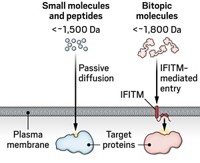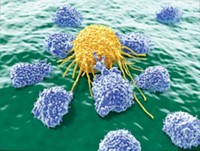Advertisement
Grab your lab coat. Let's get started
Welcome!
Welcome!
Create an account below to get 6 C&EN articles per month, receive newsletters and more - all free.
It seems this is your first time logging in online. Please enter the following information to continue.
As an ACS member you automatically get access to this site. All we need is few more details to create your reading experience.
Not you? Sign in with a different account.
Not you? Sign in with a different account.
ERROR 1
ERROR 1
ERROR 2
ERROR 2
ERROR 2
ERROR 2
ERROR 2
Password and Confirm password must match.
If you have an ACS member number, please enter it here so we can link this account to your membership. (optional)
ERROR 2
ACS values your privacy. By submitting your information, you are gaining access to C&EN and subscribing to our weekly newsletter. We use the information you provide to make your reading experience better, and we will never sell your data to third party members.
Biological Chemistry
Heat-shock protein complexes serve as cancer drug targets
‘Epichaperomes’ that form in some cancer cells might enable selective therapies
by Stu Borman
October 10, 2016
| A version of this story appeared in
Volume 94, Issue 40
Researchers have discovered that heat-shock proteins, which help cells respond to stresses such as nutrient and oxygen shortages, form large “epichaperome” protein complexes in some cancer cells. Monica L. Guzman of Weill Cornell Medical College, Gabriela Chiosis of Memorial Sloan Kettering Cancer Center, and coworkers, who carried out the study, propose that the known drug sensitivity of one of the proteins and the prevalence of epichaperomes in cancer cells may make the complexes selective targets for cancer treatments (Nature 2016, DOI: 10.1038/nature19807). The heat-shock protein HSP90 joins with dozens of chaperones and other proteins to form epichaperomes in what the researchers call type 1 cells originating from leukemia and breast, pancreatic, lung, and other cancers. However, in what they call type 2 cancer cells and in noncancerous cells, they find that most HSP90s and other heat-shock proteins exist in isolated form or only assemble into small complexes. A known HSP90 inhibitor binds more tightly to HSP90 in epichaperomes than it does to solo HSP90 and kills more type 1 cancer cells than type 2 or noncancerous cells, indicating that epichaperomes may be promising targets for selective cancer therapies.





Join the conversation
Contact the reporter
Submit a Letter to the Editor for publication
Engage with us on Twitter